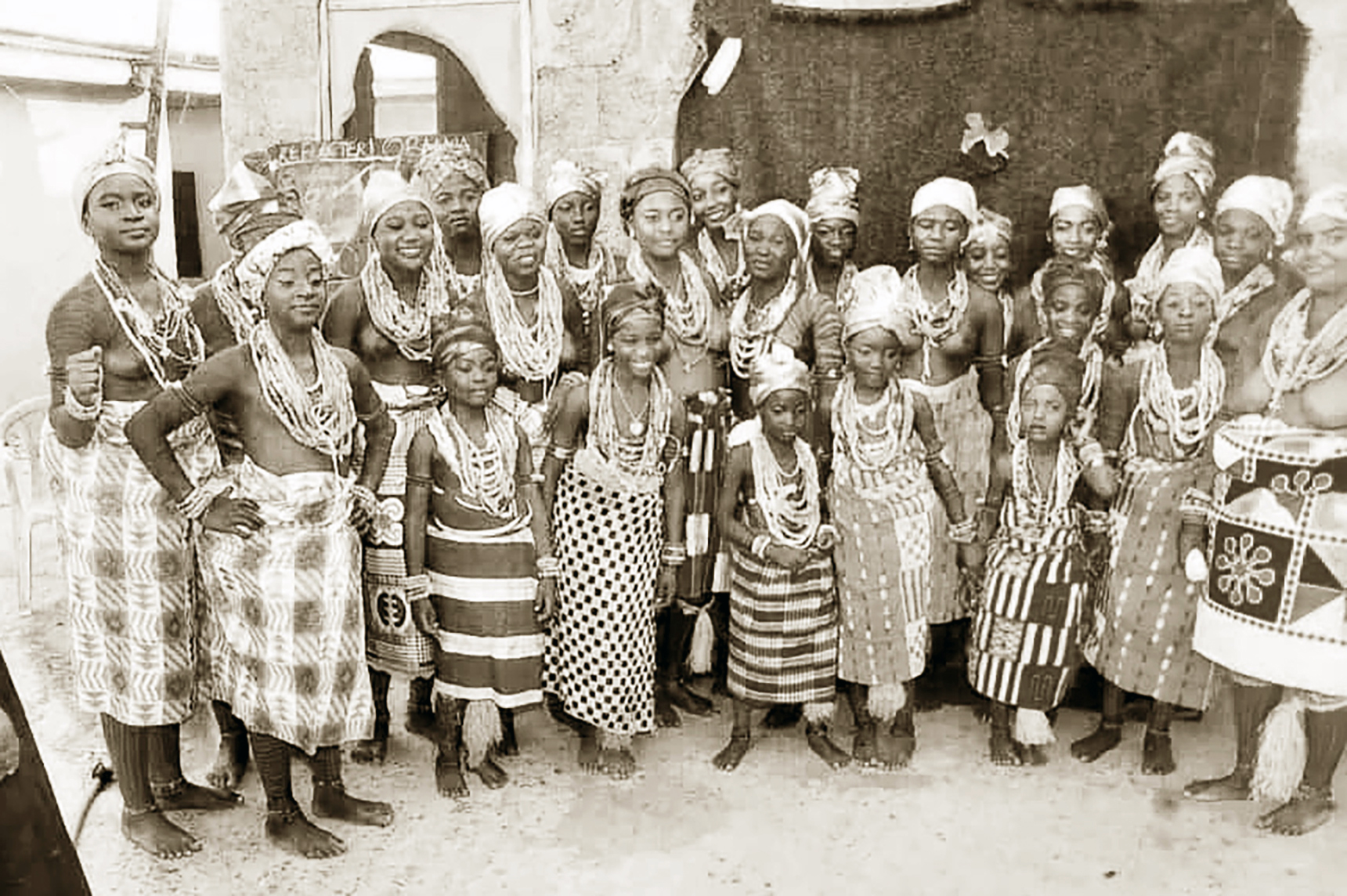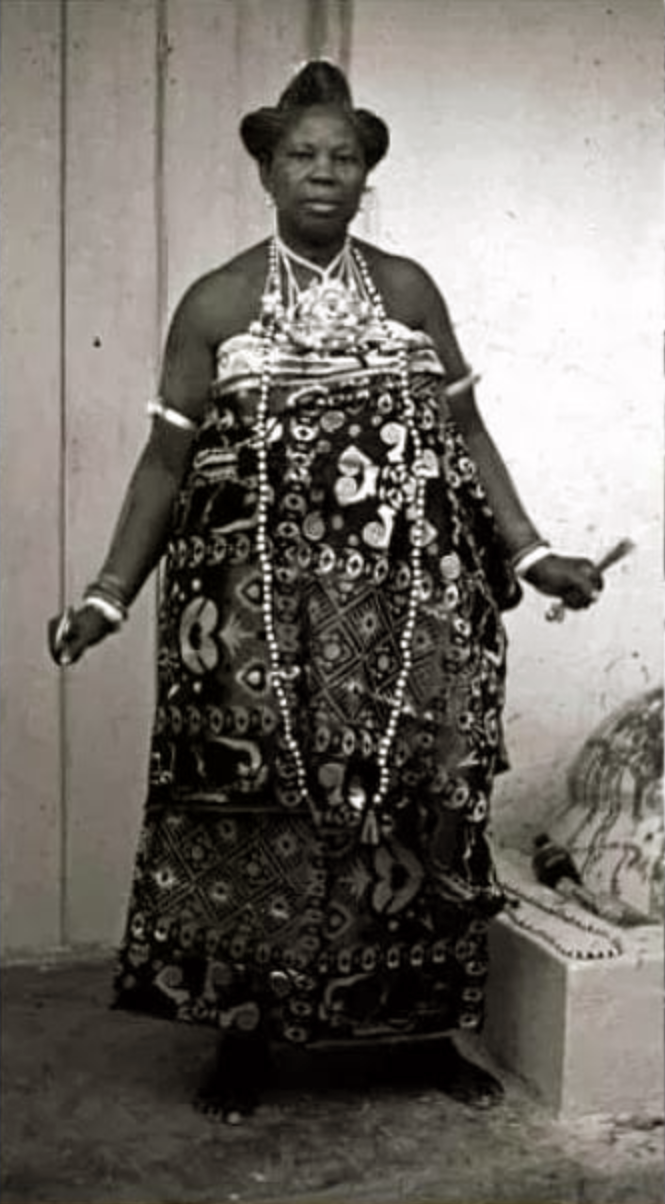Galerie Wolfgang Jaenicke
A rare PramPram sculpture
A rare PramPram sculpture
Couldn't load pickup availability
A rare PramPram sculpture (handicapped figure), with only one arm, Southern Ghana, collectes from Baba Sylla, Accra. Probably the first eyemeplare in this manner, which was published two years ago.
Representations of physically deformed or “handicapped” figures in West African art do not depict disability in the Western sense of social marginality or misfortune. Rather, they convey symbolic, spiritual, and philosophical meanings deeply rooted in the cosmologies of the societies that produced them.
Among the Yoruba, Bamana, Dogon, Baule and also PramPram, bodily irregularity is often associated with liminality — the state between the visible and the invisible world. Physical difference marks the figure as spiritually potent, endowed with access to divine or ancestral power (àṣẹ among the Yoruba), and therefore as a medium through which sacred knowledge may be transmitted.¹ Such figures are not “lesser beings” but exceptional ones, whose deviation from the norm indicates proximity to forces that transcend ordinary human boundaries.²
In royal or cultic settings, representations of the deformed or the crippled frequently appear as guardians, musicians, or diviners, emphasizing the sacred presence they serve.³ Their physical distortion functions as a metaphor for spiritual transformation, imbalance, or possession — conditions that open a channel between human and divine.
Scholars have further suggested that such sculptural forms may encode commentary on broader human conditions: the fragility of power, the inevitability of decay, or the ambiguity of beauty.⁴ Rather than idealizing symmetry and proportion, these works express an aesthetic of tension, where imperfection itself becomes a vessel of vitality and meaning.
In the coastal Ga communities of Ghana, particularly in Prampram, sculptural representations of bodily irregularity or physical handicap are rare but conceptually significant. They often appear within ritual or funerary contexts, where the body becomes a metaphor for the relationship between the living, the ancestors, and the spiritual realm. The example from Prampram verifies this conception through its deliberate distortion of form, which functions not as a record of infirmity but as a visual marker of liminality and spiritual agency.
Within Ga cosmology, the human body is understood as a vessel of both physical and metaphysical energy. When its integrity is altered—through deformation, disproportion, or truncation—the image assumes a heightened ritual charge, evoking the idea that spiritual potency may emerge precisely where the natural order appears disturbed.¹ Figures of this type are frequently connected to healing, divination, or ancestral mediation, suggesting that imperfection, far from diminishing sacred value, intensifies the presence of the invisible.
The Prampram figure of the Wolfgang Jaenicke Collection thus aligns conceptually with wider West African traditions, such as the Yoruba or Baule, in which deviation from corporeal ideality signals an enhanced spiritual condition. Its expressive imbalance, accentuated limbs, and compressed torso recall the aesthetic of spiritual intermediaries or ritual specialists whose bodies embody the paradox of human limitation and divine empowerment.²
Through this sculptural idiom, the Prampram artist renders the body not as a closed system but as a porous threshold between the tangible and the transcendent.³ The “handicapped” form, therefore, becomes a theological image — an embodiment of the instability and permeability of human existence before the gods and the ancestors.
¹ Henry Drewal, John Pemberton III, Rowland Abiodun, Yoruba: Nine Centuries of African Art and Thought, New York 1989.
² Suzanne Preston Blier, The Royal Arts of Africa: The Majesty of Form, New York 1998.
³ Jean Laude, La sculpture africaine, Paris 1966.
⁴ Herbert M. Cole, “Maternity and its Discontents in African Art,” African Arts, Vol. 26, No. 2 (1993).
⁴ Marion Kilson, Kpele Lala: Ga Religious Songs and Symbols, Cambridge 1971.
Height: 29 cm
Weight: 185 g
Sculptures identifiable as Ga, Dangme, or specifically from Prampram are rare in major museum collections, as these coastal peoples of southeastern Ghana were historically less focused on figural sculpture than the Akan or Ewe to the west and east. Their artistic expression often took other forms—architectural reliefs, ritual stools, shrine vessels, and funerary structures. Nonetheless, certain categories of objects associated with Ga-Dangme ritual and social life are preserved in a few institutions and collections.

The National Museum of Ghana in Accra houses a limited selection of Ga ritual and ceremonial objects, including wooden figures used in wɔŋ and kpele shrine contexts, as well as regalia related to chieftaincy and festivals such as Homowo. The University of Ghana Museum of Archaeology and Ethnography at Legon also maintains small holdings of Ga and Dangme materials, primarily shrine carvings and ritual paraphernalia.
Ga priestess, source Marion Kilson.
Outside Ghana, the British Museum and the Pitt Rivers Museum, Oxford, include a few early twentieth-century Ga-Dangme items collected along the Accra-Ada coast. These are generally described as ethnographic objects—staffs, swords, divination boards, or protective figures—rather than autonomous sculptures.
In private and gallery contexts, objects attributed to Prampram or the Dangme region occasionally appear in collections concerned with coastal West African art, including examples within the Wolfgang Jaenicke Gallery, Berlin, which document the transitional nature of sculpture from the coastal Ga-Dangme area, often influenced by both Akan and Ewe iconographies.
A limited corpus of Ga-Dangme sculptures has been published in early ethnographies, notably in R. S. Rattray’s Religion and Art in Ashanti (1927) and Meyerowitz’s The Sacred State of the Ga (1951), where photographs and descriptions suggest the existence of wooden figures representing ancestors or tutelary spirits, though these were never produced in large numbers.




































